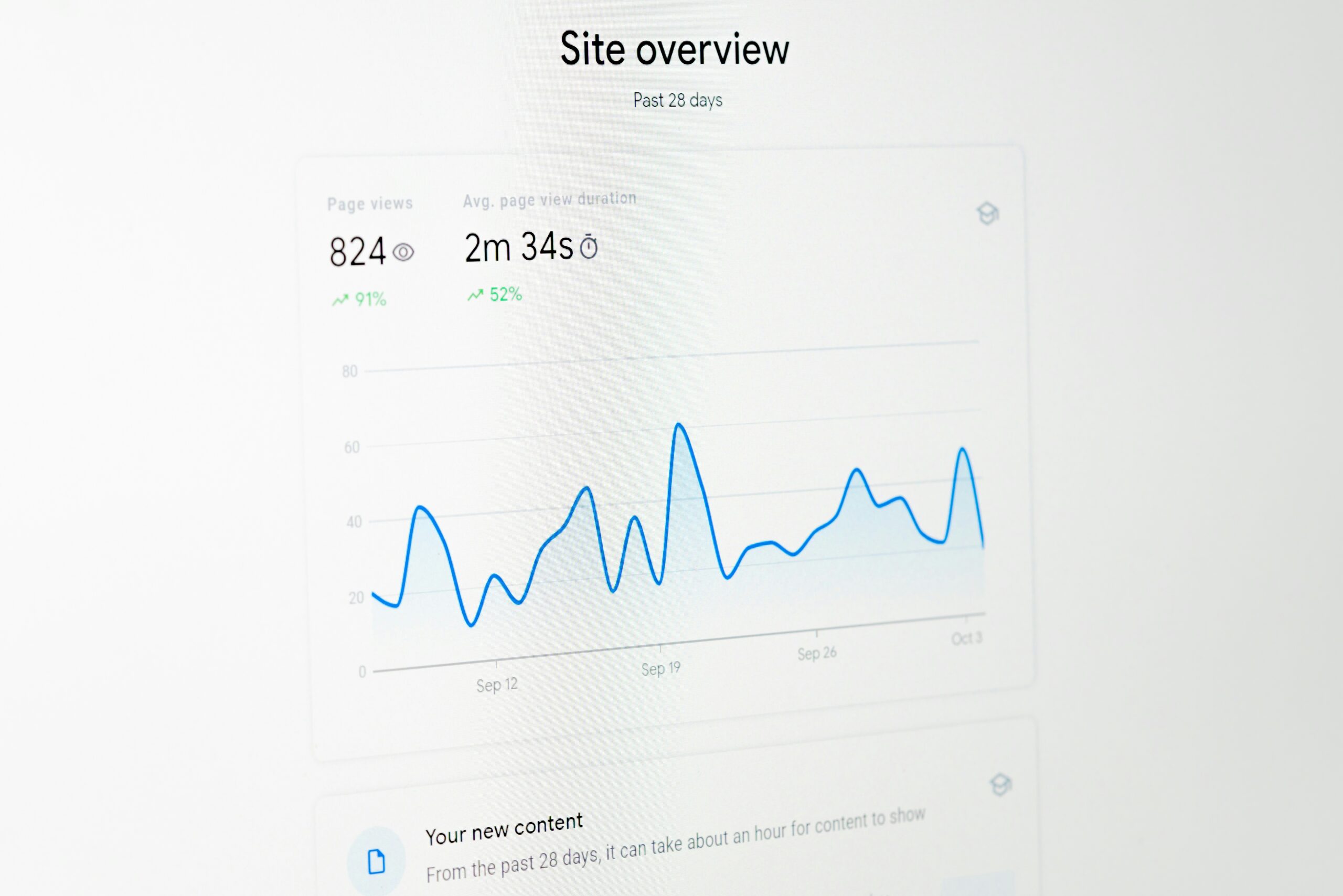

Exploring Predictive Analytics: Revolutionizing AI Marketing Strategies
In an age where data is a cornerstone of innovation, predictive analytics has emerged as a transformative force in AI marketing.
Businesses trying to stay ahead in the competitive landscape are turning to this intelligence to craft strategies that not only respond to consumer behavior but also anticipate it.
By harnessing the power of data science, AI marketing is evolving to offer personalized marketing experiences, optimize supply chain logistics, and sharpen demand forecasting.
As digital marketing becomes ever more sophisticated, the ability to draw actionable insights from big data has never been more critical.
Keep reading to uncover how predictive analytics is not only reshaping marketing strategies but also ensuring that the target audience receives a brand experience tailored to their needs and desires.
Key Takeaways
- Predictive Analytics Transforms Vast Customer Data Into Tailored Marketing Strategies That Anticipate Consumer Needs
- Real-Time and IoT Analytics Enhance Immediate Understanding and Personalization of Consumer Interactions
- A Culture of Data-Driven Decision-Making and Continuous Learning Is Vital for Successful Predictive Marketing Integration
- Strategic Predictive Analytics Align Marketing Spend With Consumer Behavior, Driving Efficiency and ROI
- High Data Quality and Ethical Management Practices Are Essential for Trust and Compliance in AI Marketing
Demystifying Predictive Analytics in AI Marketing

In the fast-paced digital marketplace, brands are increasingly turning to predictive analytics to set themselves apart, crafting personalized experiences that transcend conventional approaches. Predictive analytics in marketing leverages data and machine learning to anticipate consumer behavior, fine-tuning marketing strategies for optimal outcomes.
This evolution from retrospective data analysis to proactive intelligence has been pivotal in reshaping marketing analytics.
Core technologies like deep learning and natural language processing have democratized predictive models, making them essential components of sophisticated AI marketing tactics beyond the realm of tech giants.
As organizations embrace this shift, it becomes essential to unravel how these models transform raw data into actionable insights, empowering businesses to effectively meet demand and establish deeper connections with their target audience.
Understanding the Foundations
At its core, the methodology behind predictive analytics begins with data collection from diverse streams—including social media interactions, mobile app usage, transaction histories, and Internet of things data—to build rich, insightful customer profiles. Through intricate data analysis, these profiles enable marketers to predict future behavior, creating a more personalized marketing approach that resonates with each customer’s distinct preferences and needs.
The Evolution of Marketing Analytics
From tallying customer purchases in ledgers to real-time web analytics, marketing analytics has experienced a seismic shift. With a modern reliance on data-driven marketing, this facet of the industry now amalgamates technology such as machine learning and cloud computing to dissect and leverage big data, transforming it from mere numbers into a substratum for strategic decision-making and predictive insights that fuel growth and customer satisfaction.
Core Technologies Powering Predictive Models
Innovations in data science, such as pattern recognition, collaborative filtering, and prescriptive analytics, are the driving forces behind these predictive models. By scrutinizing vast amounts of unstructured data through data mining techniques and utilizing algorithms fine-tuned by machine learning, these technologies enhance an organization’s ability to anticipate market trends, gauge supply and demand forecasting, and mitigate downtime, thereby sculpting a more informed, reactive supply chain management and targeted marketing approach.
How Predictive Analytics Is Shaping Future Marketing

In a landscape where foresight translates to success, predictive analytics emerges as a transformative force in AI marketing.
This strategic asset leverages data analysis and intelligence to anticipate consumer behavior, which enables brands to craft personalized campaigns poised to captivate and engage.
Whether it’s refining email marketing nuances or optimizing mobile app interactions, the promise of predictive analytics lies in its power to tailor customer engagement strategies that resonate profoundly with audiences, ensuring every marketing move is both calculated and effective.
Anticipating Consumer Behavior
By embracing predictive analytics, businesses are endowed with the capability to project and respond to customer patterns before they fully manifest. This prescience goes beyond simply reacting to user needs; it’s about crafting experiences and interactions that align seamlessly with prospective customer journeys, significantly elevating the likelihood of securing their loyalty and patronage.
Crafting Personalized Campaigns
Predictive analytics is like a secret weapon for personalized ads. It helps marketers understand what people like and when they’re most likely to pay attention.
By focusing on what people buy, how they use social media, and even how they feel, marketers can create ads that not only match but also predict what people expect.
This not only makes ads more relevant but also helps build stronger connections with customers, making them more loyal to a brand. In a world where everything is personalized, predictive analytics is like a superhero for marketers, helping them understand and meet people’s preferences smartly.
| Actionable Insight | Outcome | |
|---|---|---|
| Shopping Behavior | Dynamic Pricing Adjustments | Optimized Sales & Revenue |
| Social Media Engagement | Targeted Ad Placements | Increased Brand Visibility |
| Sentiment Analysis | Personalized Marketing Messages | Enhanced Customer Satisfaction |
Enhancing Customer Engagement Strategies
Integrating predictive analytics into marketing strategies manifests a renaissance in customer engagement. By extracting insights from behavior patterns and online interactions, businesses can cultivate more impactful relationships with their audience, arising from a profound understanding and anticipation of their needs.
| Engagement Metric | Enhancement Technique | Impact on Customer Journey |
|---|---|---|
| Newsletter Open Rates | Email Marketing Optimization | Improved Lead Generation and Retention |
| App Engagement Levels | Personalized Push Notifications | Boosted User Activity and Brand Interaction |
| Customer Feedback | Real-time Response Systems | Increased Customer Satisfaction and Loyalty |
The Strategic Edge of Predictive Analytics in Marketing

As businesses strive to navigate an ever-evolving marketplace, the adoption of predictive analytics stands as a linchpin in achieving a sharp competitive advantage, yielding fiscal prudence in marketing spend, and the polished acumen in capturing and nurturing promising leads.
By intelligently forecasting market demands and consumer inclinations, marketing teams can now allocate resources with unprecedented acuity and elevate the efficiency of lead conversion processes, setting the stage for a new era of customer-centric, data-empowered marketing strategies.
Gaining Competitive Advantage
Predictive analytics propels brands to the forefront of their industries by enabling them to outpace competition through refined foresight and targeted consumer insights. By deploying predictive marketing analytics, companies craft strategies that are not only reactive to current trends but also prescient of future shifts, positioning them to capitalize on opportunities before they become apparent to others.
| Action | Benefit | Competitive Advantage |
|---|---|---|
| Early Identification of Market Trends | Proactive Strategy Adjustment | Staying Ahead of the Curve |
| Focused Customer Retention Efforts | Improved Churn Rate | Higher Customer Lifetime Value |
| Anticipatory Inventory Management | Reduced Overstock and Stockouts | Optimized Supply Chain Efficiency |
Optimizing Marketing Budget Allocation
Predictive analytics reshapes the methodology behind marketing expenditures, enabling businesses to channel funds into ventures with the highest likelihood of return on investment: optimized allocation is a game changer for maximizing impact while minimizing waste.
- Dissecting customer data to align the budget with high-conversion channels.
- Forecasting sales trends to adjust advertising spend in real-time.
- Identifying profitable customer segments to improve targeting precision.
Refining Lead Qualification and Conversion
Predictive analytics sharpens an organization’s lead qualification and conversion, endowing teams with the clout to distinguish the most promising prospects from the less likely. This targeted discernment steers effort and resources to nurturing leads that demonstrate behaviors indicating a higher propensity to purchase: capturing superior lead conversion rates through precision.
- Employing predictive models to score and prioritize leads based on conversion likelihood.
- Utilizing behavioral data and pattern recognition to tailor follow-up strategies and messaging for different lead segments.
- Enhancing lead nurturing programs with data-driven insights, thereby reducing time to conversion and increasing marketing ROI.
Integrating Predictive Analytics Into Marketing Plans

As businesses navigate the complexities of a data-rich environment, the integration of predictive analytics into marketing plans stands as a pioneering step toward revolutionizing customer interactions and optimizing campaign outcomes.
Initiating this transformative process involves a structured approach, ensuring that each step aligns seamlessly with organizational aspirations while effectively navigating the challenges that invariably arise during such technological assimilation.
Companies are set to explore the realms of predictive insights with a directed focus on aligning these advanced analytics methodologies with their core business goals, paving a path through the sophisticated digital terrain.
Step-by-Step Approach to Implementation
Implementing predictive analytics in a marketing strategy commences with a meticulous evaluation of data sources and the selection of appropriate analytics solutions: an intentional first step critical for achieving desired outcomes.
| Step | Objective | Key Actions |
|---|---|---|
| Data Audit | Assess current data quality and sources | Identify gaps, enhance data collection methods |
| Technology Integration | Deploy predictive analytics tools | Select platforms, train team on software utilization |
| Pilot Testing | Validate the predictive model accuracy | Conduct small-scale campaigns, analyze results |
| Scaling | Implement analytics at full-scale | Expand use across marketing channels, refine strategy |
Aligning Predictive Analytics With Business Goals
Aligning predictive analytics with business goals is about ensuring that predictions drive value and growth aligned with strategic aims. Marketers and data scientists collaborate to map analytics objectives to overall business targets, paving the way for significant improvements in customer acquisition, retention, and profitability:
| Business Goal | Predictive Analytics Objective | Expected Outcome |
|---|---|---|
| Customer Acquisition | Identify high-potential markets and segments | Strategic entry into new markets with tailored offerings |
| Customer Retention | Pinpoint at-risk customers for retention campaigns | Improved customer lifetime value and lower attrition rates |
| Revenue Growth | Optimize cross-sell and up-sell opportunities | Increased per-customer revenue through tailored product suggestions |
Overcoming Challenges in Integration
Integrating predictive analytics into marketing strategies can encounter hurdles, from securing stakeholder buy-in to managing vast data sets. Building a culture that values data-driven decision-making and ensuring access to high-quality, actionable data can pave the way for successful integration.
| Challenge | Strategy | Benefit |
|---|---|---|
| Stakeholder Buy-In | Present case studies & ROI projections | Secured Investment & Support |
| Data Management | Invest in robust data infrastructure | Reliable Insight Generation |
| Cultural Shift | Training & Change Management | Adoption of Data-Driven Mindset |
The Role of Data Quality in Predictive Marketing

Marketers emphasize how crucial it is to have strong and dependable data as the base for predictive analytics. The effectiveness of marketing plans depends on handling this wealth of information well, while also safeguarding personal data following changing privacy rules and ethical guidelines.
Keeping data clean and accurate isn’t just a technical requirement; it’s an ethical obligation. It ensures that predictions are sharp, and marketing strategies are considerate and meaningful to consumers. In essence, maintaining trustworthy data is not only good for business but also the right thing to do.
Sourcing and Managing Marketing Data
In the realm of AI marketing, the key pillars are efficient gathering and careful handling of marketing data. An organization must give priority to setting up an advanced data collection system that captures the detailed preferences and behaviors of its customers. This ensures a rich source of high-quality information for the predictive analytics engine.
Striking the right balance between collecting sufficient data for detailed predictions and respecting consumer privacy is a delicate task, requiring vigilant oversight and forward-thinking data management practices.
It’s essentially about gathering the right amount of data to make accurate predictions while respecting the privacy of the customers, and this demands a careful and progressive approach to data management.
Addressing Data Privacy and Ethical Considerations
As predictive analytics fortify the backbone of AI marketing, data privacy, and ethical considerations grow increasingly paramount: a deep-rooted commitment to these principles is essential for sustaining consumer trust and aligning with regulatory compliance.
| Consideration | Action Required | Predictive Marketing Relevance |
|---|---|---|
| Consumer Consent | Secure explicit permissions for data use | Respecting privacy while tailoring marketing efforts |
| Data Anonymization | Implement techniques to mask identities | Safeguarding personal information while analyzing trends |
| Regulatory Adherence | Comply with evolving data protection laws | Ensuring ethical use of data across marketing campaigns |
The Importance of Data Hygiene and Accuracy
The vitality of data hygiene and precision in predictive marketing cannot be overstated; they serve as cornerstones for trustworthy analytics. Flawless data ensures that the advanced algorithms that underpin predictive analytics function at their peak, consequently yielding actionable insights that are both precise and reliable—facilitating marketing strategies that are tailored, timely, and teeming with relevance for today’s consumer.
Emerging Trends in Predictive Analytics for Marketing

The realm of artificial intelligence in marketing is undergoing a significant transformation, thanks in large part to predictive analytics.
This innovative field is constantly being shaped by new trends and advancements, with machine learning algorithms becoming more sophisticated and precise.
Real-time analytics now play a critical role in understanding and responding to consumer behavior instantaneously.
Moreover, as the Internet of Things (IoT) expands, it offers a wealth of data that can be leveraged for predictive marketing, providing deeper insights into consumer patterns and preferences.
Advancements in Machine Learning Algorithms
Machine learning algorithms are now more adept than ever, adapting in real-time and continuously learning from new data to sharpen their predictive capabilities. This evolution in algorithm sophistication is pivotal for discerning nuanced customer patterns, enabling brands to deploy marketing strategies with a high degree of precision and personalization that were previously unattainable.
The Growing Importance of Real-Time Analytics
The growing importance of real-time analytics is transforming how organizations respond to their customers’ immediate needs and preferences. By harnessing this technology, companies can analyze consumer behavior as it happens, enabling them to take swift, informed actions that enhance customer experience and drive conversion rates: an essential factor in today’s fast-paced digital economy.
| Consumer Interaction | Real-Time Analytics Application | Business Advantage |
|---|---|---|
| Website Visits | Tracking and analysis of user navigation patterns | Improved website design and content personalization |
| Product Searches | Real-time insights on trending products or services | Agile marketing response, adjusting inventory and recommendations |
| Purchase Transactions | Instant analysis of purchasing behaviors | Enhanced up-selling and cross-selling strategies |
Intersection of IoT and Predictive Marketing Insights
The Internet of Things (IoT) holds a valuable collection of data created by users, and predictive analytics turns this data into a map that guides marketing strategies with remarkable precision. By understanding signals from connected devices, brands can provide personalized services and improve products, greatly enhancing the customer experience and creating a new level of brand loyalty. In essence, the wealth of data from IoT becomes a powerful tool for brands to tailor their approach, ensuring a more personalized and satisfying relationship with their customers.
Preparing for the Future With Predictive Marketing Analytics

As organizations set their sights on the promises of artificial intelligence to chart marketing strategies, preparing for the future becomes synonymous with nurturing key competencies.
Building a skilled analytics team lays the foundation for extracting meaningful patterns from complex data sets, while the agility to learn and adapt keeps strategies relevant in a fast-paced digital landscape.
Moreover, the selection of predictive analytics tools equips businesses with the precision required to transform vast data into sharp marketing foresight.
Each step fortifies the organization’s arsenal for navigating the nuanced terrain of AI marketing.
Building a Skilled Analytics Team
Investing in a team with data science acumen is indispensable for organizations eager to harness predictive analytics in marketing. Companies must seek out individuals with a blend of technical expertise in data analysis and machine learning, as well as a shrewd understanding of marketing dynamics, to enrich their strategies with deep, actionable insights.
Staying Ahead With Continuous Learning and Adaptation
Embracing a culture of continuous learning and adaptation is critical for businesses to maintain relevancy in the rapidly changing AI marketing landscape. Organizations that invest in ongoing education and technological agility empower their teams to recognize and react to emerging marketing trends, ensuring that their predictive analytic efforts consistently align with the ever-evolving consumer demands and industry innovations.
Investing in the Right Predictive Analytics Tools
Choosing the right predictive analytics tools equates to unlocking the true potential of data-driven marketing, where precision in forecasting meets the efficiency of implementation. Organizations are increasingly vetting technologies that offer seamless integration with existing databases, boast advanced machine-learning capabilities, and provide user-friendly interfaces for swift adoption by marketing teams. It’s a strategic investment that bonds the prowess of predictive insights with the clarity of marketing objectives, fostering innovation and finetuning marketing tactics to a razor’s edge.
Conclusion
Predictive analytics stands as a transformative force in AI marketing, offering a strategic advantage that allows businesses to foresee consumer behavior and tailor personalized campaigns effectively.
By leveraging data from various sources, including social media and IoT devices, and harnessing advanced machine learning algorithms, companies can create dynamic pricing adjustments, optimize ad placements, and send personalized marketing messages that enhance customer satisfaction and loyalty.
The key to success lies in robust data quality, privacy adherence, and continuous adaptation to new trends like real-time analytics and IoT data integration.
Investing in a skilled analytics team and the right predictive analytics tools empowers organizations to navigate the complex digital landscape with agile, data-empowered marketing strategies that not only meet but anticipate market demand, ensuring a competitive edge and driving sustainable business growth.

Comments